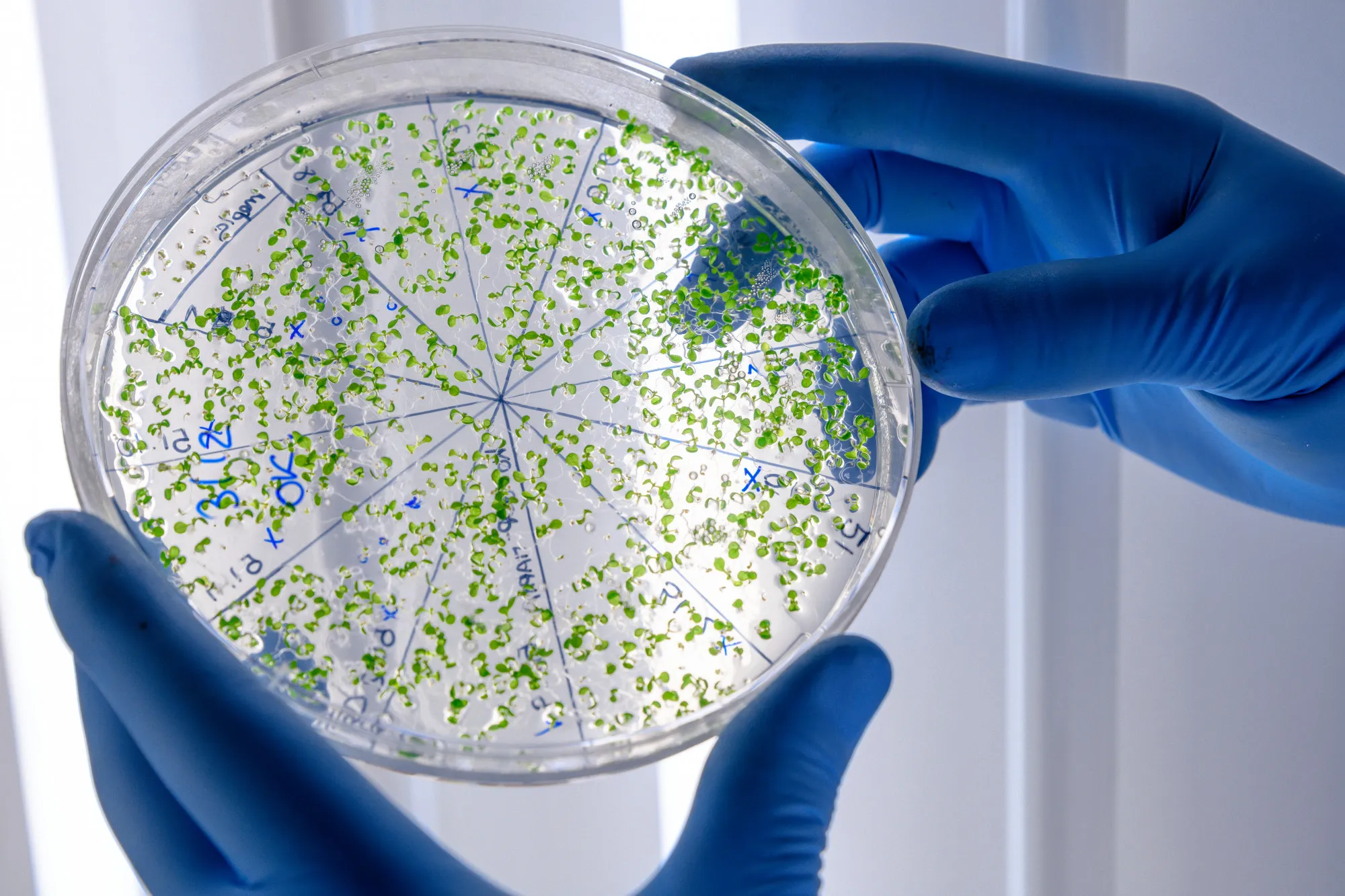Introduction
In the calm waters of freshwater environments, a microscopic drama unfolds as the alphaproteobacterium Caulobacter crescentus embarks on a life crucial for its survival: surface adhesion. This process is not just a matter of bacterial preference but is the cornerstone of biofilm formation, a defensive strategy enabling microbes to thrive in various environments. A new study, published in the Journal of Bacteriology, has delved into the molecular intricacies that allow C. crescentus to firmly grasp onto surfaces, presenting seminal insights into the bacterial adhesion process.
The study, led by Nina I. Sulkowski from the Sir William Dunn School of Pathology at the University of Oxford, alongside a multidisciplinary team of researchers, addresses how the adhesive holdfast of C. crescentus, a key to the microbe’s tenacious grip, is anchored at the bacterial outer membrane. This groundbreaking research is not only paramount to our understanding of biofilm formation but also holds promise for developing new strategies to combat biofilm-associated infections.
Caulobacter crescentus: A Model for Understanding Adhesion
C. crescentus has long been a model organism for studying the cell cycle and development in bacteria, with its ability to adhere to surfaces being of particular interest. Adhesion is facilitated by a specialized polysaccharide adhesive known as the holdfast, which is found at the tip of the bacterium’s stalk—an extension projecting from its cell body. Until recently, the detailed mechanisms behind anchoring this adhesive to the outer membrane remained largely enigmatic.
The Multiprotein Anchoring Complex
Sulkowski and her team utilized a combination of genetics, biochemistry, and state-of-the-art microscopy techniques to uncover a multiprotein complex that plays a pivotal role in anchoring the holdfast to C. crescentus’s outer membrane. This complex is composed of several proteins that converge to provide a robust attachment point for the adhesive holdfast, ensuring the bacterium’s steadfast presence on surfaces.
One fascinating aspect of their findings is the structural organization of these anchoring proteins. Using cryo-electron microscopy (cryo-EM) and electron cryotomography (cryo-ET), the researchers visualized the architecture of the anchoring complex in situ. Their high-resolution images revealed a sophisticated assembly of proteins that interact synergistically to secure the holdfast at the outermost layer of the bacterium.
The research team also examined gene expression regulation linked to this multicomponent anchoring system. Protein components of the anchoring complex were found to be coordinately regulated, ensuring that the assembly and maintenance of the adhesion point are attuned to the developmental cycle of C. crescentus.
Significance of the Study
This research not only enlarges our knowledge of bacterial cell biology but paints a more comprehensive picture of how microbes establish their niche in various environments. Understanding the specifics of bacterial adhesion can have wide-ranging implications—from the design of antibiofilm materials to novel antimicrobial therapies.
In the context of biofilm-related infections, which are notoriously difficult to treat due to the protective nature of biofilms, targeting the adhesive holdfast could disrupt the initial stages of biofilm formation. Such anti-adhesion strategies might render bacteria more susceptible to antibiotics and immune system clearance, potentially overcoming one of the critical hurdles in treating persistent infections.
Implications for Material Science and Engineering
Moreover, the insights gained from this study extend beyond microbiology into material science and engineering. Surface design applications, such as developing bacteria-resistant coatings for medical devices, could significantly benefit from understanding the adhesive strategies of C. crescentus. Creating surfaces that prevent bacterial adhesion could lead to revolutionary advancements in healthcare by limiting the incidence of device-associated infections.
Conclusion
The findings of Sulkowski and colleagues represent a monumental step forward in our appreciation of the elaborate mechanisms that underpin bacterial adhesion. As researchers continue to unravel the molecular details of the adhesion process, we move closer to mitigating the risks associated with biofilm formation and leveraging the principles of bacterial adhesion for technologically innovative applications.
The seminal contribution to the field is aptly summed up by Yves V. Brun and Tanmay A.M. Bharat, co-authors of the study, who highlight the project’s interdisciplinary approach, merging molecular biology with cutting-edge structural biology techniques. It stands as a testament to the power of collaborative science in answering profound biological questions.
Digital Object Identifier (DOI): 10.1128/JB.00112-19
References
1. Sulkowski, N. I., et al. (2019). A Multiprotein Complex Anchors Adhesive Holdfast at the Outer Membrane of Caulobacter crescentus. Journal of Bacteriology, 201(18), e00112-19.
2. Berne, C., et al. (2015). Adhesins involved in attachment to abiotic surfaces by Gram-negative bacteria. Microbiology Spectrum, 3(4).
3. Cramton, S. E., et al. (1999). The intercellular adhesion (ica) locus is present in Staphylococcus aureus and is required for biofilm formation. Infection and Immunity, 67(10), 5427–5433.
4. Van Houdt, R., & Michiels, C. W. (2005). Role of bacterial cell surface structures in Escherichia coli biofilm formation. Research in Microbiology, 156(5), 626–633.
5. Whitney, J. C., & Howell, P. L. (2013). Synthase-dependent exopolysaccharide secretion in Gram-negative bacteria. Trends in Microbiology, 21(1), 63–72.
Keywords
1. Caulobacter crescentus adhesion
2. Bacterial biofilms
3. Multiprotein anchor complex
4. Microbial surface attachment
5. Antibiofilm strategies
